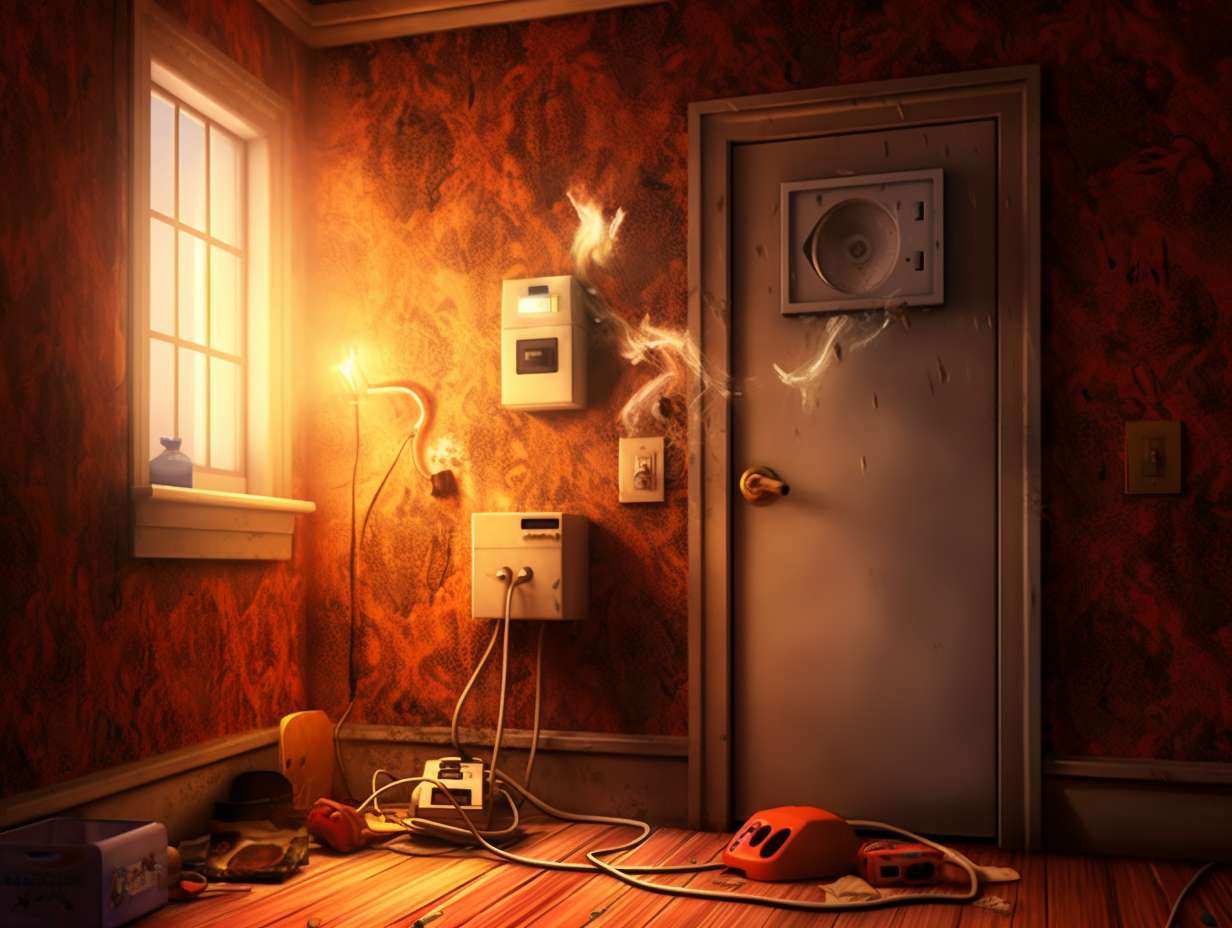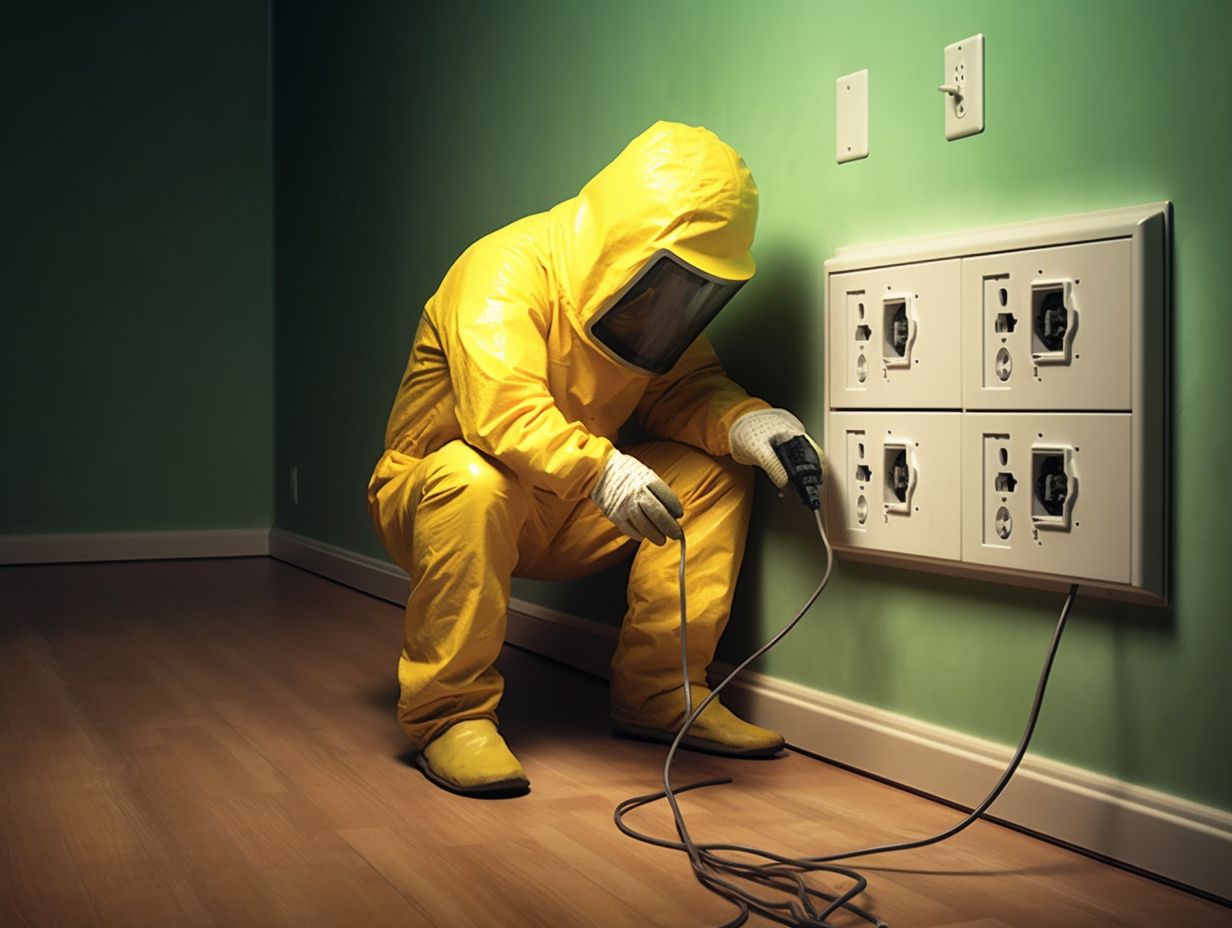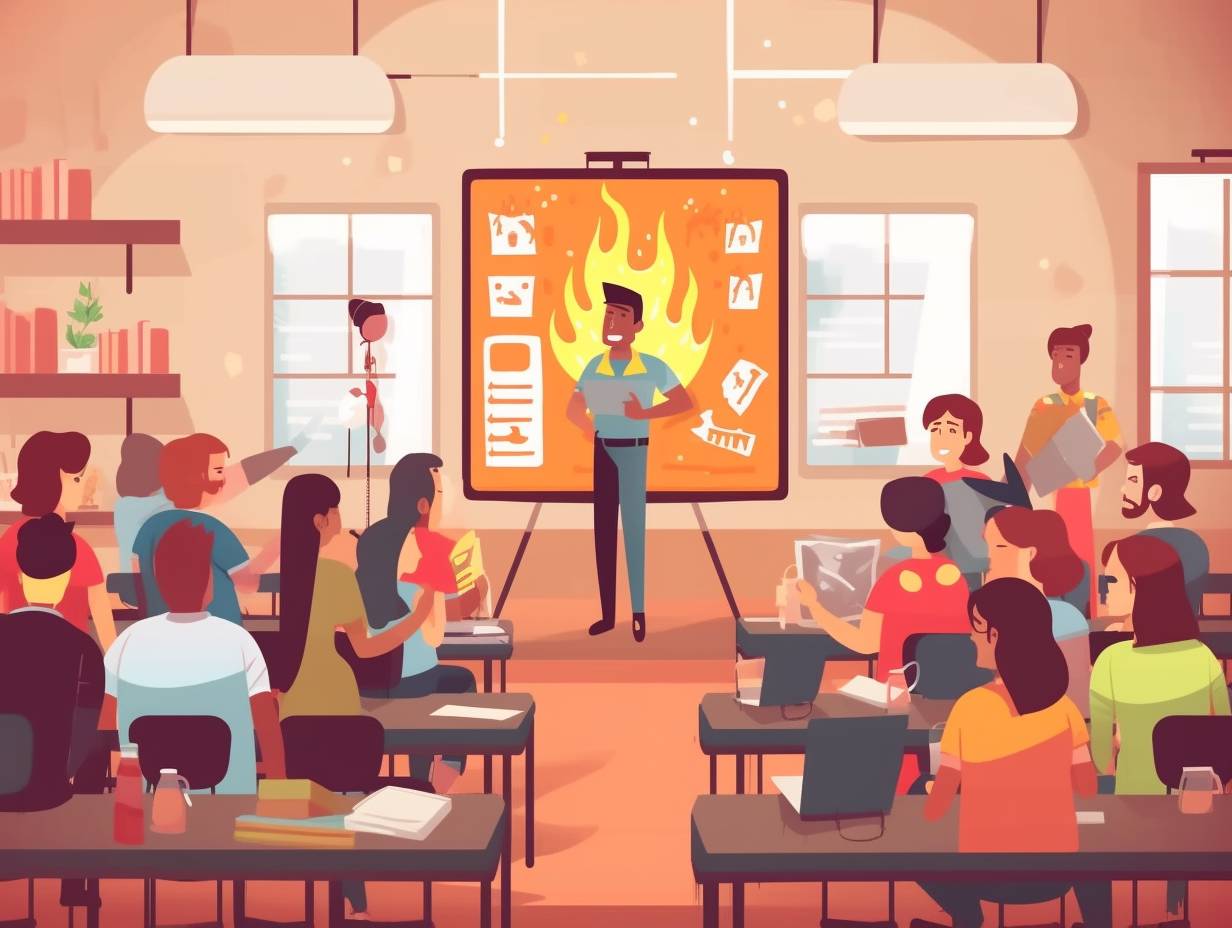
Creating Safe Clearances: Guidelines For Fire Safety
Table Of Contents
- Identifying Potential Hazards
- Proper Installation and Maintenance of Heating Equipment
- Electrical Appliance Safety
- Emergency Planning and Preparedness
- Escape Routes and Meeting Places
- Smoke Detection and Alarm Systems
- Fire Extinguisher Use and Maintenance
- Evacuation Procedures and Protocols
- Training and Education for Building Occupants
- Continual Evaluation and Improvement of Fire Safety Measures
- Frequently Asked Questions
- Conclusion

Are you familiar with the importance of creating safe clearances in your home or workplace? In order to minimize the risk of fire and ensure the safety of yourself and others, it is crucial to follow guidelines for fire safety. By identifying potential hazards, properly installing and maintaining heating equipment, practicing emergency planning and preparedness, and regularly evaluating and improving safety measures, you can take proactive steps towards preventing fires.
Taking precautions such as ensuring electrical appliances are used safely and having proper escape routes in place can make all the difference in a dangerous situation. Additionally, educating building occupants on fire safety procedures and regularly conducting evacuation drills can increase awareness and preparedness. In this article, we will explore these guidelines for creating safe clearances in detail so that you can feel confident in your ability to prevent fires before they happen.
Identifying Potential Hazards

Now you’re going to identify potential hazards that could be present in your space, so you can create safe clearances for fire safety. It’s important to take this step seriously because identifying hazards is the first and most crucial part of creating a fire safety plan. Common hazards include things like electrical wiring that isn’t up to code, overloaded extension cords, flammable materials stored too close together, and blocked exits.
To properly identify these hazards, you’ll need to conduct a risk assessment. This involves looking at every aspect of your space and determining what could potentially cause a fire or hinder evacuation in the event of one. You may want to consult with a professional if you’re unsure about anything or if your space has unique features that require special attention. Remember that it’s better to be safe than sorry when it comes to fire safety, so take the time needed to do a thorough assessment and identify any potential hazards before moving on to creating clearances.
Proper Installation and Maintenance of Heating Equipment
You need to make sure you’re regularly checking and maintaining your heating equipment, or else it could potentially explode like a fireworks display. Proper installation of your heating equipment is crucial for ensuring its safety. You should always have a qualified professional install the system to make sure it’s done correctly. After installation, regular maintenance procedures must also be followed.
Maintenance procedures include inspecting the heating equipment annually or as recommended by the manufacturer. Check for any leaks or cracks in the pipes, valves, and connections. Clean or replace filters regularly to prevent dirt buildup that can cause damage over time. Make sure to follow all instructions provided by the manufacturer when performing maintenance tasks on your heating equipment. By following proper installation and maintenance procedures, you can ensure safe operation of your heating system and prevent potential hazards from occurring.
Electrical Appliance Safety

Maintaining electrical appliances properly, such as unplugging them when not in use and keeping cords organized and untangled, can help prevent potential hazards. Here are some tips to ensure your electrical appliances are safe to use:
-
Check safety standards: Always make sure that the appliance you’re using meets the safety standards set by your local authorities. This ensures that the product has been tested for safety and is reliable.
-
Regular maintenance: Properly maintaining your electrical appliances means checking them regularly for any signs of wear and tear or damage. If there is any damage, have it repaired immediately.
-
Avoid overloading: Overloading an outlet with too many appliances can cause it to overheat, which can lead to a fire hazard. Make sure you’re not plugging in too many items at once.
-
Monitor power consumption: Be mindful of how much electricity your appliances consume, as this can affect their safety over time. Consider replacing older models with newer ones that are more energy-efficient to reduce power consumption and lower the risk of hazards.
By following these guidelines, you can help ensure the safe use of your electrical appliances and minimize potential risks associated with their operation.
Emergency Planning and Preparedness
In case of a catastrophic event, it’s essential to have an emergency plan ready that covers every possible scenario and prepares you for the worst-case scenario. Emergency drills are a crucial component of this plan because they help everyone in the building understand their roles during an evacuation or other emergency. When conducting these drills, make sure to practice different scenarios so that everyone knows what to do in case of a fire, earthquake, or other disaster.
Another vital part of your emergency plan is developing communication plans. Make sure everyone in the building knows how to reach each other in case of an emergency. Have a designated meeting area where people can gather after evacuating the building, and ensure that all employees know how to contact emergency services if necessary. By being prepared and having a well-thought-out plan in place, you’ll be able to minimize damage and protect lives during any catastrophic event.
Escape Routes and Meeting Places

Having designated escape routes and meeting places during an emergency is crucial for ensuring the safety of everyone in the building. Designated routes should be clearly marked and easily accessible, and everyone in the building should be familiar with them. Make sure that there are no obstacles blocking these routes, such as boxes or furniture, so that people can quickly and safely evacuate.
In addition to having designated escape routes, it is also important to have a designated meeting place outside of the building. This meeting place should be far enough away from the building so that people are not in danger if there is a fire or other emergency. The meeting place should also be easy to find and well-lit at night. Having a clear plan for family reunification after an emergency will help ensure that everyone is accounted for and safe.
Smoke Detection and Alarm Systems
Make sure you’re prepared for any emergency by making sure your smoke detection and alarm systems are functioning properly. These systems are essential in providing early warning of a fire, giving you enough time to escape safely. However, simply installing them is not enough. You need to regularly test their effectiveness and make sure they are free from any obstructions that can interfere with their operation.
To ensure the proper functioning of your smoke detection and alarm systems, conduct regular tests according to the manufacturer’s instructions. Test these systems at least once a month by pressing the test button on the detector or using a can of smoke to simulate an actual fire. Additionally, it is important to replace batteries every year or when they run low as weak batteries may cause false alarms or prevent an alarm from sounding during an actual emergency. By taking these simple steps, you can help protect yourself and your loved ones from fire-related disasters.
Fire Extinguisher Use and Maintenance

Ensure you’re ready to fight small fires by properly maintaining and regularly checking the functionality of your fire extinguisher. Proper handling, storage and disposal of flammable materials is important to prevent fires from occurring in the first place. Knowing how to use a fire extinguisher correctly can be crucial in keeping a small fire from turning into a large one.
It’s also essential to understand fire classes and choose the right extinguisher for the type of fire you may encounter. There are four classes of fires: A (ordinary combustibles such as wood or paper), B (flammable liquids like gasoline), C (electrical equipment) and D (combustible metals). Each class requires a specific type of extinguisher that corresponds with the fuel involved. Make sure you have the appropriate type of extinguisher on hand for potential emergencies, and know how to use it safely and effectively.
Evacuation Procedures and Protocols
Now that you know how to properly use and maintain fire extinguishers, it’s time to focus on evacuation procedures and protocols. In the event of a fire, your top priority is to get everyone out of the building safely and quickly. This can be achieved by implementing effective evacuation drills and utilizing clear exit signage.
To ensure everyone knows what to do in case of a fire, it’s important to conduct regular evacuation drills. These drills should simulate real-life scenarios as closely as possible, including alarm activation and designated escape routes. By practicing these procedures regularly, individuals will feel more confident in their ability to evacuate safely during an actual emergency.
In addition to conducting evacuation drills, clear exit signage is crucial for guiding individuals towards safe exits. Exit signs should be well-lit and visible from all areas of the building, even in low-light situations. The placement of these signs should also be strategic, leading individuals towards the quickest and safest route out of the building. Remember: every second counts during a fire emergency, so ensuring that everyone can easily locate exits is essential for their safety.
Training and Education for Building Occupants

You can improve your knowledge and skills in handling emergencies by participating in training and educational programs provided for building occupants. Creating effective training and education is essential to ensure that everyone understands evacuation procedures and protocols. Building occupants should be trained on how to respond during a fire emergency, including identifying different types of alarms, knowing the location of exits and extinguishers, proper use of fire equipment, and understanding the importance of staying calm.
In addition to basic fire safety training, building occupants should also receive regular updates on new procedures or changes to existing ones. Training sessions can also simulate scenarios such as power outages or blocked exits to prepare occupants for unexpected situations. By providing adequate training and education for building occupants, they are better equipped to handle emergencies safely and effectively.
Continual Evaluation and Improvement of Fire Safety Measures
Regularly assessing and enhancing fire prevention measures is critical to maintaining a secure building environment. Conducting regular inspections and risk assessments are essential to identify potential hazards that may cause fires or hinder evacuation routes. These evaluations should be performed by qualified professionals who have extensive knowledge of fire safety guidelines and regulations.
Moreover, the findings of these assessments must be used as a basis for improvement in existing fire safety measures. Building owners must take the necessary steps to address any identified risks promptly. This could include upgrading outdated fire suppression systems, installing additional smoke detectors or fire alarms, or implementing better evacuation plans. By continually evaluating and improving fire safety measures, building occupants can feel more secure in their surroundings, knowing that everything has been done to minimize the risk of fires occurring and ensure safe evacuation if they do occur.
Frequently Asked Questions
What is the best type of fire extinguisher to use for different types of fires?
To choose the right fire extinguisher type, identify the source of the fire first. Class A fires involve combustibles like paper and wood, while Class B is for flammable liquids. Use a multi-purpose extinguisher for both types to ensure proper usage. Regular maintenance and inspection are also crucial for effective fire safety measures.
How often should smoke detectors be tested and replaced?
You rely on your smoke detector to keep you safe, but do you give it the attention it deserves? Regular maintenance is key - test monthly and replace every 10 years. Don’t wait for disaster to strike.
What are some common causes of electrical fires and how can they be prevented?
To prevent electrical fires, always use safety measures like surge protectors and avoid overloading outlets. Regularly inspect cords and replace any that show wear or damage. Don’t forget to unplug appliances when not in use for added electrical fire prevention.
Are there any special considerations for fire safety in high-rise buildings?
When it comes to fire safety in high-rise buildings, having effective evacuation plans is crucial. Fire safety strategies for skyscrapers include ensuring proper ventilation systems and installing sprinklers on every floor.
What steps should be taken to ensure that individuals with disabilities are able to safely evacuate in the event of a fire?
To ensure safe evacuation planning for individuals with disabilities, consider their specific needs and create accommodations such as accessible exits and emergency communication methods. Practice drills should also be conducted to familiarize everyone with the evacuation process.
Conclusion
Congratulations! You have successfully learned about creating safe clearances and guidelines for fire safety. By following the steps outlined in this article, you can ensure that your building is equipped with the necessary measures to prevent fires and protect occupants.
Just like a well-oiled machine, your fire safety plan should be regularly evaluated and improved to ensure maximum effectiveness. Remember, fire safety is not a one-time task but an ongoing responsibility. So, keep up with maintenance, educate occupants on safety protocols, and always stay prepared for emergencies. Like a flower that needs nurturing to blossom fully, your fire safety plan requires regular attention to flourish. Stay vigilant and take action now to create a safe space for all!
Disclaimer: Some information is provided through AI. Users should always conduct their own research and consult with qualified professionals before making any decisions.Affiliate information declaration: We may earn revenue from the products referred on this page and participate in affiliate programs.


